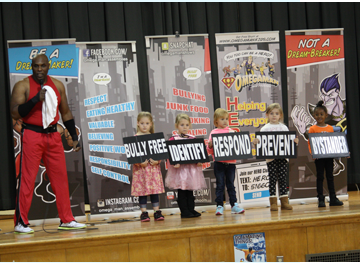
Share the commitment to and responsibility for character education.
Character education requires visible, supportive leadership.


Students play an important leadership role in contributing to the character initiative.


Character education requires visible and supportive school and district leaders who are able to make the connection between character development, school improvement, and academic achievement. In addition, they must be able to foster a sense of shared ownership for long-range sustainability, not only with their staff, but also with their school board, district administrators, parents, students, and the broader school community.

Shared leadership puts core ethical values into action, offering repeated opportunities for all individuals in the school community to grow in character. Leadership cannot be a one-person game if it is to be truly effective in creating and sustaining character education, or, for that matter, any educational initiative.
Principle 9 recognizes that leaders possess skills and traits in varying degrees and individuals express them in different, but equally important ways.


School Examples
Self-Reflection
How does your school engage all stakeholders in leadership and what is the most challenging part of involving so many in the decision making process? What is the most rewarding part of shared leadership?
Student leadership is often surface level, how has your school equipped and empowered your students to lead?
[wp_quiz id=”3981″]
Research that Supports Principle 9
![]()
“Our mistake has been in looking to the principal alone for instructional leadership, when instructional leadership is everyone’s work. We need to develop the leadership capacity of the whole school community. Out of that changed culture will arise a new vision of professional practice linking leading and learning.”
A Framework for Shared Leadership, by Linda Lambert
![]()
“Shared leadership means a shift from the formal leader to a shared leadership model resulting in shared power and decision-making. Instead of a single individual leading to success, other individuals, who are partners or group members, are invited to share the responsibility for leadership and develop a positive school climate.”
School Climate and Shared Leadership, By William Hughes and Terry Pickeral

Authored by Lori Soifer



